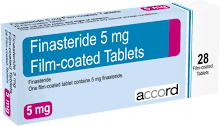The medical reports of a client who suffered an accident show injuries at the sixth thoracic vertebra, lack of normal sympathetic outflow, bradycardia and low blood pressure. Which condition does the nurse suspect in the client?
Conus medullaris syndrome
Concussion
Neurogenic shock
Diffuse axonal injury
The Correct Answer is C
Choice A rationale: Conus medullaris syndrome involves injury or compression to the end portion of the spinal cord and can present with various symptoms but not necessarily lack of normal sympathetic outflow leading to shock.
Choice B rationale: Concussion is a mild traumatic brain injury, and the symptoms described align more with spinal cord injury leading to neurogenic shock.
Choice C rationale: Neurogenic shock occurs due to the loss of sympathetic tone and is characterized by bradycardia, low blood pressure, and vasodilation following spinal cord injury at or above the level of the sixth thoracic vertebra.
Choice D rationale: Diffuse axonal injury typically presents with more widespread brain injury-related symptoms and is not associated with the specific spinal cord-related symptoms described.
Nursing Test Bank
Naxlex Comprehensive Predictor Exams
Related Questions
Correct Answer is D
Explanation
Choice A rationale: Fluoxymesterone is a synthetic forms of testosterone that can worsen BPH by increasing the level of DHT.
Choice B rationale: Danazol is a synthetic forms of testosterone that can worsen BPH by increasing the level of DHT.
Choice C rationale: Methyltestosterone is a synthetic forms of testosterone that can worsen BPH by increasing the level of DHT.
Choice D rationale: Finasteride is a medication that inhibits the conversion of testosterone to dihydrotestosterone (DHT), which is a hormone that stimulates the growth of the prostate gland. By reducing the level of DHT, finasteride can shrink the enlarged prostate and improve urinary symptoms in men with benign prostatic hyperplasia (BPH). The other choices are not appropriate for BPH.
 |
Correct Answer is B
Explanation
Choice A rationale: Localization of pain refers to the ability of an individual to pinpoint the exact location of pain, which is different from the described response.
Choice B rationale: Decorticate posturing involves the arms flexing inward toward the body, which is consistent with the observed response to nail bed pressure.
Choice C rationale: Decerebrate posturing involves extension and outward rotation of the arms, which is different from the described response.
Choice D rationale: Flexion withdrawal typically involves pulling away from a painful stimulus, which differs from the specific response observed in the scenario.
Whether you are a student looking to ace your exams or a practicing nurse seeking to enhance your expertise , our nursing education contents will empower you with the confidence and competence to make a difference in the lives of patients and become a respected leader in the healthcare field.
Visit Naxlex, invest in your future and unlock endless possibilities with our unparalleled nursing education contents today
Report Wrong Answer on the Current Question
Do you disagree with the answer? If yes, what is your expected answer? Explain.
Kindly be descriptive with the issue you are facing.
